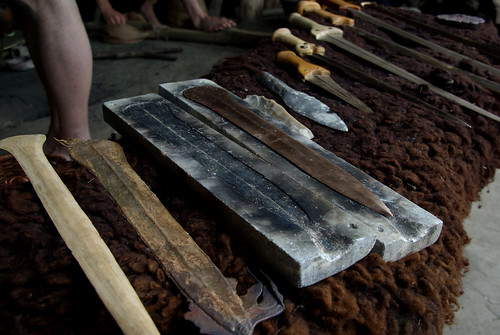
 )
)Our family recently streamed a sermon series on Esther. One installment focused on the armed confrontations between Jews and their antagonists at the end of the book, the end result of Haman’s plan to eliminate the Jews and Esther’s counter-maneuvering on their behalf. The teaching focused on the challenges such passages pose. Is the Bible being prescriptive or merely descriptive in including such violence? Does the fact that God’s purpose–the survival of the chosen people–is achieved through bloodshed represent an endorsement? Valid questions without scientific answers; I refer you to the sermon for more direct engagement of those issues. Here instead we’ll explore a related topic: just what would those confrontations have looked like?
The Esther series reminded me of the Hardcore History podcast, which did three episodes under the heading King of Kings on the Persian Empire, including the time of Esther, Daniel and other Biblical books. Hardcore History is a military history podcast, and I always have reservations when listening. While I don’t think the show intends to glorify violence, I think there’s a risk when taking such a deep dive. At the same time I think it is important to recall the tragedies of wars past in the hopes that we can avoid future atrocities. And when the topics are ancient, I see an opportunity to better understand the cultures and experiences contemporary to various Biblical stories.
One of the questions that comes up on episodes about such ancient warfare is the nature of combat in battle. When two large armies arranged in formation met each other, was there substantial direct engagement along the lines or were these battles more about positioning and posturing? Hardcore History host Dan Carlin is interested in the psychology of warfare and has wondered how many soldiers had the necessary mindset to kill another human in close quarters. Were they largely willing to wade into such grisly business, or did many of them avoid the violence and the risk of being the victim of such violence? Modern psychology may be able to explore such questions to a degree, but psychology is not purely nature and the nurture side of contemporary life is very different, limiting the applicability. Turns out someone found another way to explore the topic, not from a psychological angle but more of a metallurgical one.
The research involves Bronze Age swords. Bronze is an alloy of mainly copper with tin and possibly other metals which is harder than any of those metals alone. Copper and tin are rarely found together naturally, so combining them was a technological development that offered advantages, both military and civilian, to societies that learned to mix them. At the same time, bronze is not as hard as iron. But iron melts at a higher temperature than copper and tin and it took time to invent kilns that could get hot enough to make iron malleable. So bronze was state of the art for a time, up to about 1200 BC in the parts of the world where the Old Testament takes place. That’s before Daniel and Esther which take place in the Iron Age, but earlier stories such as those of Abraham or the conquest of Canaan are from the Bronze Age. So understanding how these Bronze Age swords were used could tell us something about combat in that Biblical era.
How do we find out how the swords were used? In this case, we can find contemporary swordsman using old techniques and see how the wear and tear on their weapons compares to archaeological samples. Enter the Society for Creative Anachronism, LARPers (Live Action Role Play), and related denizens of college quads. Or at least the ones I’m familiar with. Anyway, the answer they helped to reveal is that the marks on actual Bronze Age swords were consistent with the marks made using specific techniques, suggesting the swords were used, and used by swordsmen with training. Perhaps that might help add some texture to your next reading of Joshua or Judges.
Andy has worn many hats in his life. He knows this is a dreadfully clichéd notion, but since it is also literally true he uses it anyway. Among his current metaphorical hats: husband of one wife, father of two teenagers, reader of science fiction and science fact, enthusiast of contemporary symphonic music, and chief science officer. Previous metaphorical hats include: comp bio postdoc, molecular biology grad student, InterVarsity chapter president (that one came with a literal hat), music store clerk, house painter, and mosquito trapper. Among his more unique literal hats: British bobby, captain’s hats (of varying levels of authenticity) of several specific vessels, a deerstalker from 221B Baker St, and a railroad engineer’s cap. His monthly Science in Review is drawn from his weekly Science Corner posts — Wednesdays, 8am (Eastern) on the Emerging Scholars Network Blog. His book Faith across the Multiverse is available from Hendrickson.

Leave a Reply